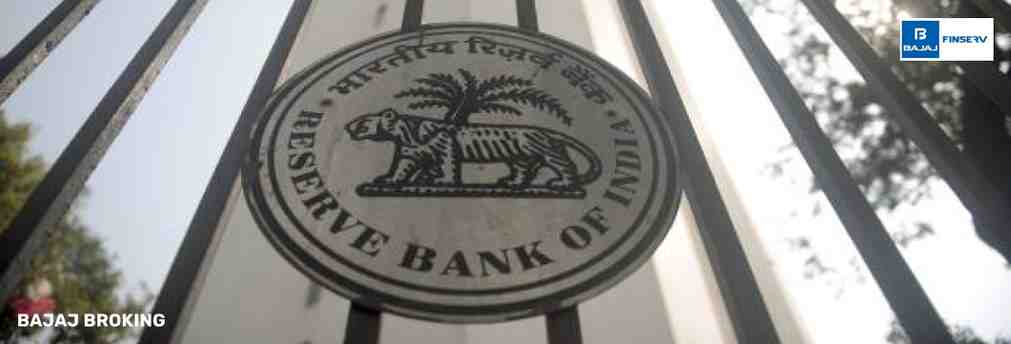BAJAJ BROKING
🚨 Trading Holiday 🚨
Open a Free Demat Account
Trade Now, Pay Later with up to 4x
Track Market Movers Instantly
RBI Cuts Repo Rate by 25 Bps: What It Means for You
The Reserve Bank of India (RBI) has announced a 25 basis points (bps) repo rate cut, bringing it down to 6.25%, marking the first rate reduction in nearly five years. This decision, taken unanimously by the Monetary Policy Committee (MPC) led by Governor Sanjay Malhotra, reflects evolving economic conditions amid global uncertainties.
Why Did RBI Cut the Repo Rate?
The rate cut follows subsiding inflation concerns and shifting monetary policy priorities aimed at economic stability. December’s inflation rate dipped to 5.22%, the lowest in four months, driven by easing food prices. The RBI’s decision aligns with its objective of ensuring stable inflation while supporting economic activity.
Governor Malhotra noted that "progress in global disinflation is stalling," highlighting a cautious approach amid international economic fluctuations. India's foreign exchange reserves remain strong at $630 billion, providing robust external stability.
How Does the Repo Rate Cut Affect Borrowers?
With the repo rate cut, borrowing costs are expected to decline for retail and business loans. Home loans, personal loans, and other floating-rate borrowings linked to the repo rate could see adjustments in interest rates. Since October 2019, all retail floating-rate loans have been tied to an external benchmark, primarily the repo rate, making this decision significant for borrowers.
Potential Savings for Home Loan Borrowers
For homebuyers, the rate cut means lower EMIs and reduced interest payouts. If you have a ₹40 lakh home loan with a 9% interest rate for 20 years:
Before the rate cut: EMI = ₹35,989 | Total Interest = ₹46.4 lakh
After 25 bps rate cut (8.75%): EMI remains the same, but total interest reduces to ₹42.88 lakh, saving nearly ₹3.52 lakh.
The loan tenure could also reduce by 10 months, helping you clear the loan faster.
For a ₹40-lakh loan at 8.85% for 25 years, the rate cut could reduce the tenure by 27 months, saving ₹8.92 lakh in interest, if the EMI remains unchanged.
Sectoral Impact: Who Gains, Who Lags?
Following the announcement, rate-sensitive sectors such as real estate, banking, and auto came into focus as expectations build around further monetary policy adjustments.
While IT and Pharma stocks performed well in the recent market session, Realty and Auto stocks lagged. The market reaction remained cautious ahead of further clarity on monetary policy directions.
Key Announcements from the RBI Policy Meeting 2025
- Review of Trading and Settlement Timings – A working group will assess possible changes to trading hours in RBI-regulated markets.
- New Domain for Banks to Curb Cyber Frauds – Banks will adopt an exclusive domain, ‘fin.in’, with registrations starting in April.
- Foreign Exchange Reserves Remain Strong – India's forex reserves stand at $630 billion, providing more than 10 months of import cover.
- Inflation Projections – RBI maintains an inflation forecast of 4.2% for FY26, with food inflation expected to soften.
- Growth Projections – India’s GDP for FY26 is pegged at 6.7%, with quarterly estimates indicating sustained momentum.
Looking Ahead: What’s Next for Monetary Policy?
RBI’s shift to a less restrictive monetary policy reflects a balancing act between containing inflation and fostering growth. Analysts and industry experts will closely watch for further policy shifts in response to economic data.
The repo rate cut’s effectiveness in stimulating demand, improving liquidity, and supporting growth will depend on how banks adjust lending rates and how consumers respond to changing borrowing conditions.
Final Thoughts
The RBI’s decision to lower the repo rate has opened up conversations around its impact on lending, economic activity, and financial markets. While the move provides relief to borrowers, it also signals changing economic conditions that warrant close observation.
Disclaimer: Investments in the securities market are subject to market risk, read all related documents carefully before investing.
This content is for educational purposes only. Securities quoted are exemplary and not recommendatory.
For All Disclaimers Click Here: https://www.bajajbroking.in/disclaimer
Share this article:
Read More Blogs
Our Secure Trading Platforms
Level up your stock market experience: Download the Bajaj Broking App for effortless investing and trading












